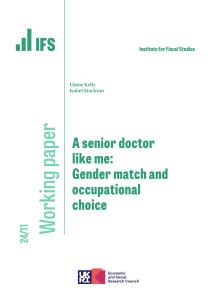The problems facing the NHS — rising waiting lists, struggling A&E departments, strikes — are all too well known. That is bad enough. We don’t just face a problem with our national health service, though; we also face a problem of a staggering worsening in our national health.
Measuring changes in the health of the nation over relatively short periods is not always straightforward. There is one thing it is hard to argue about though, and that is death. We have been dying in greater numbers than usual since at least June of this year. Although mortality tends to vary a lot from one year to another over the winter months, it rarely if ever changes over the summer, so that is a striking difference from the norm. More people died in England and Wales this summer even than in 2020 and 2021, and considerably more than the average over the few years previous to that. The Institute and Faculty of Actuaries’ Continuous Mortality Investigation reckons that we have had 25,000 excess deaths so far this year.
Perhaps we have become inured to this after the shock of Covid but even if we are callous enough to want to ignore the excess deaths the toll that sickness is taking on the rest of society is also grim.
The NHS is, as we know, struggling to recover. It is not even managing to treat as many people as it was before the pandemic, despite having more resources. There are still lots of people in hospital with Covid, more people spending protracted periods in hospital and difficulty discharging into a social care sector that appears woefully under-resourced and under-staffed. Tracking the higher rates of mortality it is also likely that the NHS is having to look after more acutely sick patients who missed treatment or diagnosis during the pandemic. Put all these issues together and they appear to have cumulated to create a systemic problem that is likely to take years rather than months to resolve.
Outside of the health service, economic inactivity as a result of long-term ill health has risen above two and a half million for the first time on record.
Note, though, that contrary to much speculation this does not seem to have been a significant contributory factor to the reduced size of our workforce. Most of these newly sick were out of work already. Falling labour force participation seems to be driven largely by voluntary early retirement.
Then there is disability: 44 per cent of all working-age people not in work are disabled. Disabled people are two and a half times more likely to be out of work than the rest and are more likely to be low paid if they are working. One of the main reasons that people with low levels of education are much less likely to be in work than the highest educated is that they are far more likely to be suffering from some form of disability. The economic, social and personal costs are huge.
Those costs are growing because rates of disability are rising and they appear to be rising by similar proportions, for all forms of disability, whether caused by respiratory, heart, musculoskeletal, mental or, perhaps most mysteriously of all, hearing and visual problems.
As a consequence, one of the most striking changes of the past year has been an extraordinary increase in the number of people claiming disability benefits, largely personal independence payment (PIP). This is paid according to level of disability and is not dependent on either income or work status, although most recipients are out of work. The number of new claims literally doubled between last year and this, after a long period of relative stability. Claims and awards rose in proportion. More people claiming did not lead, as one might expect, to a smaller proportion being successful in their claim.
That was one of the reasons for perhaps the most startling of all the Office for Budget Responsibility’s prognostications alongside last month’s autumn statement. It increased its forecasts for future incapacity and disability benefit spending by a cool £7.5 billion a year.
These benefit statistics give us another window on to what might be happening to population health. Claims for disability benefits have roughly doubled at all ages, although the reasons for claims differ by age. The large majority of those in their 20s with PIP claims have mental or behavioural problems. It is physical problems that drive claims for older people. Claims for both have increased in lock step.
A lot of this is likely to have been driven by the backwash from Covid and lockdowns. A combination of the long-term health effects of Covid, conditions not diagnosed or treated during the pandemic, reduced immunity and the psychological effects of lockdown remain with us.
That leaves us with a big and crucial unknown. Is this a one-off and relatively short-term blip? Will we be stuck with a higher level of sickness for a long period? Worst of all, are we set on a new trend of ever-rising ill health? We don’t know, but it would be foolhardy to assume that the problems will simply dissipate of their own accord. Those who start on disability benefits tend to remain on them for a while. Those in their fifties who start suffering from long-term conditions often suffer for the rest of their lives. The consequences for both health and the health service arising from the pandemic are likely to be with us for the long run.
Part of the answer lies with the funding, staffing and performance of the NHS. The wider public health crisis — I use the word advisedly — will require a much broader-based response, and not just from central government. Public health needs to move up all our agendas.










